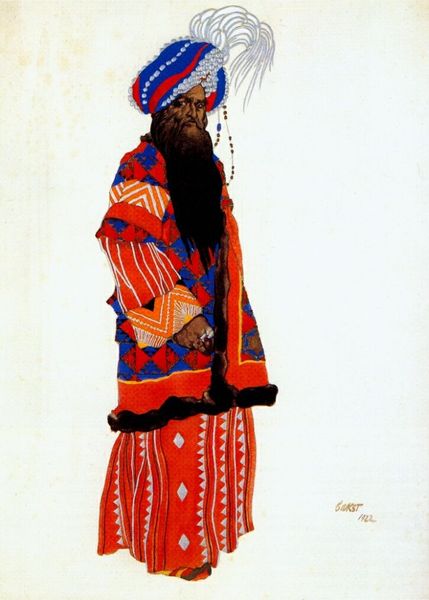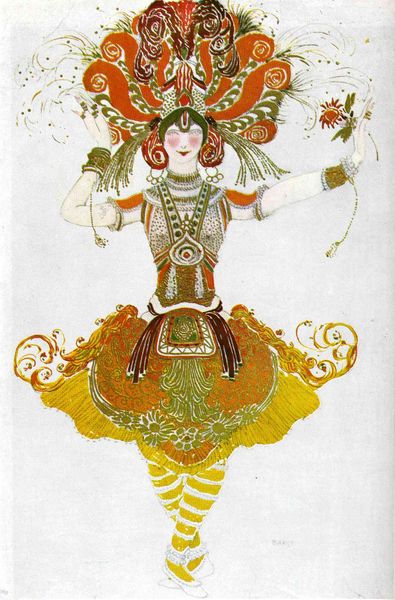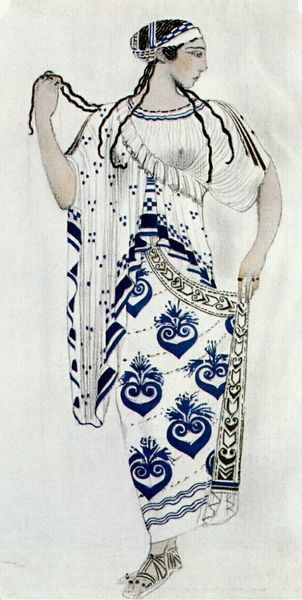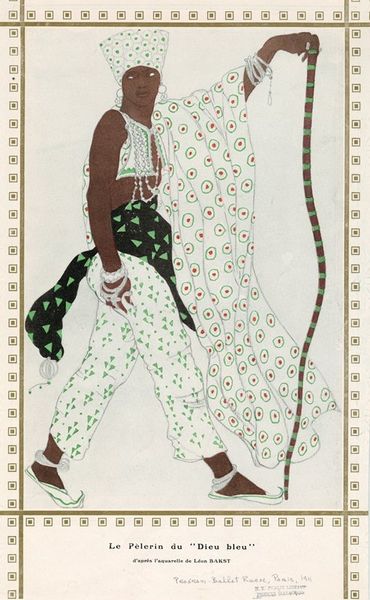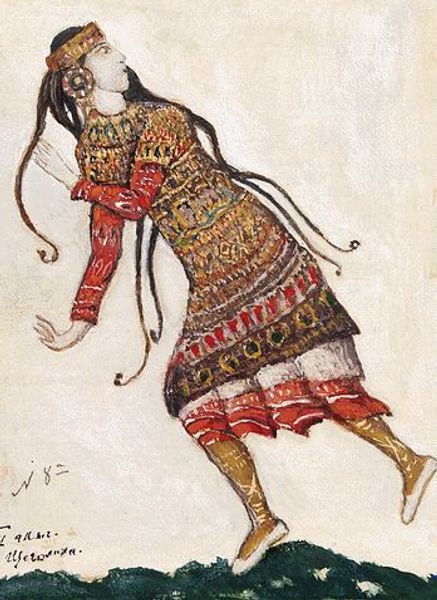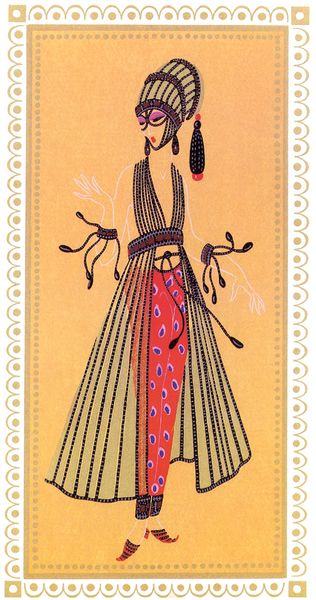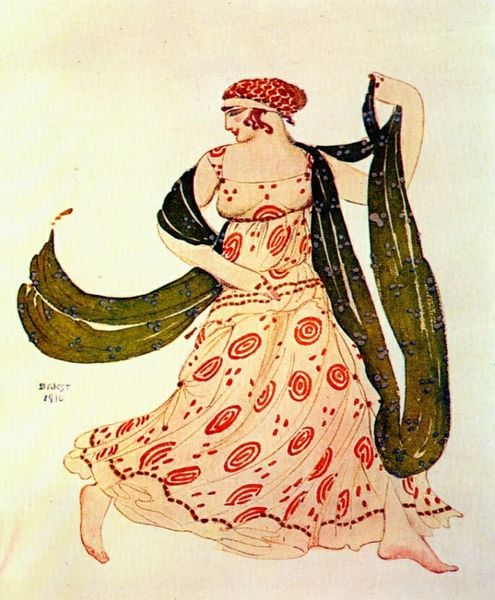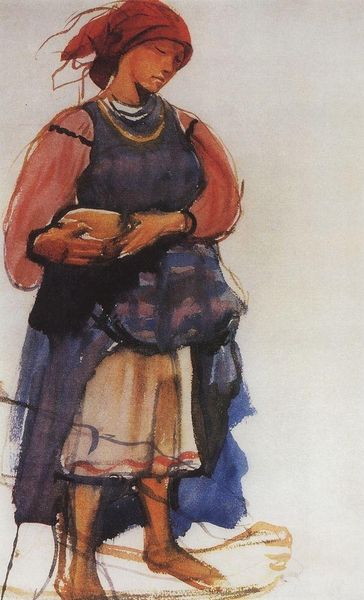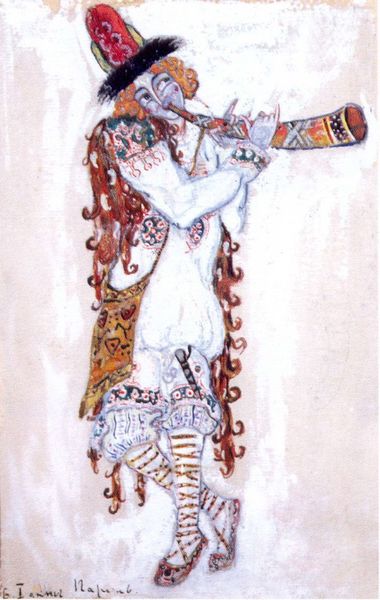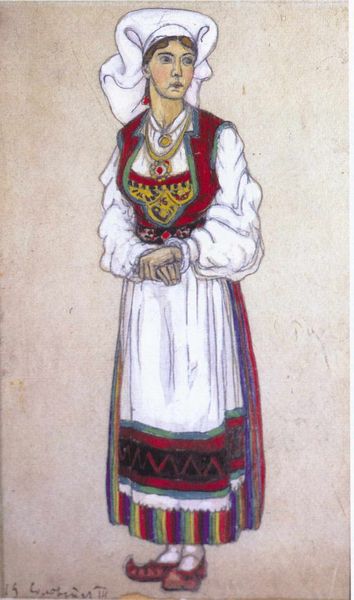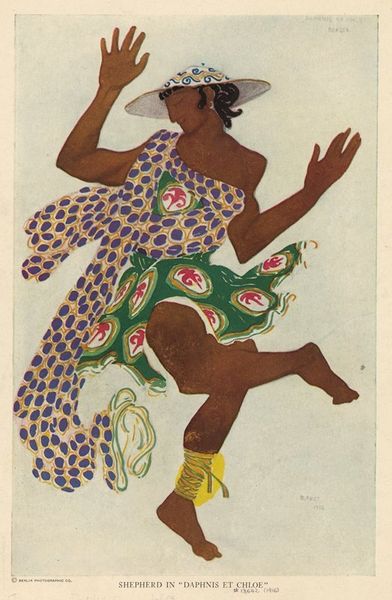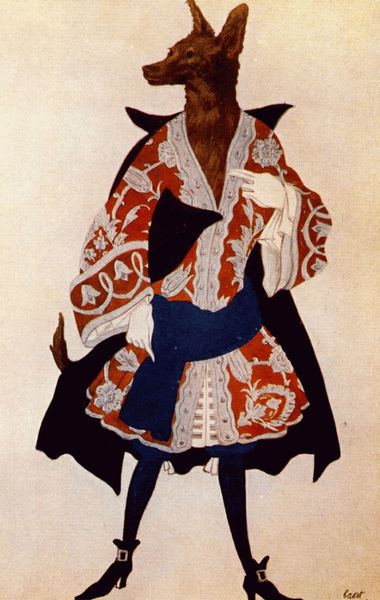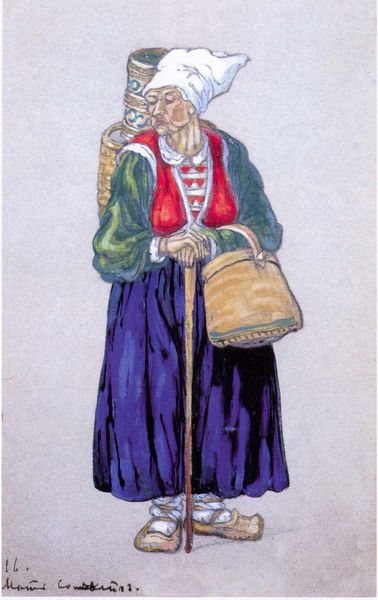
Copyright: Public domain
Editor: Here we have Léon Bakst's "L'apres midi d'un faune, a nymph" from 1912, it seems to be a painting... maybe mixed media. The figure feels poised and elegant, though slightly stylized. What strikes you when you look at this? Curator: Immediately, the theatricality of this image speaks volumes. Given Bakst's deep involvement in the Ballets Russes, this design offers insight into the relationship between art, performance, and cultural identity. How might this nymph's costume contribute to the ballet's overall narrative, and its reception in early 20th-century Paris? Editor: So, it’s about performance. The costume feels deliberately ‘Greek,’ referencing ancient mythology… but it also feels a bit modern? Curator: Precisely! Bakst was acutely aware of the power of visual culture to shape perceptions. His designs weren’t just about historical accuracy; they actively engaged with contemporary understandings of classicism. Consider how the simplified forms and vibrant palette both evoke and reinvent the past, playing with ideas about primitivism, sexuality, and exoticism prevalent at the time. How did the public perceive the performance in light of these visual cues, and were those perceptions in alignment with the Ballet Russes' goals? Editor: That's a fascinating point – it's about crafting a specific *idea* of the classical world, rather than simply replicating it. The use of colour… were those colours meant to evoke or provoke? Curator: Both, likely. Red, especially, held connotations of passion, revolution, and even danger. Juxtaposed against the white, the red accentuates the exotic allure central to the Ballet Russes' brand. It prompted engagement, critique, and inevitably, dialogue about where Europe situated itself in relationship to a perceived "other." These vibrant stage productions fostered conversation, challenged expectations, and spurred new forms of visual expression within a changing socio-political arena. Editor: This has completely changed my understanding; seeing it as less about classical art, and more about the politics of representation on stage. Curator: Precisely! Analyzing costume and performance design grants insight into understanding not only artistic innovation but also to understanding evolving ideas, assumptions and public discourse.
Comments
No comments
Be the first to comment and join the conversation on the ultimate creative platform.
